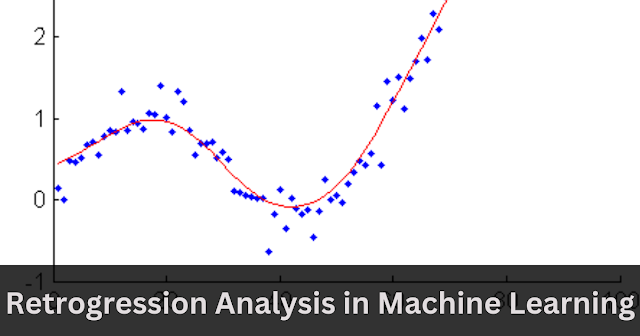1. Introduction
Retrogression analysis, also known as regression analysis, is a vital concept in machine learning and statistical modeling. It plays a significant role in understanding the relationship between variables and making predictions. This article explores the concept of retrogression analysis, its different types, and its application in machine learning.
2. Simple Linear Retrogression
Simple linear retrogression focuses on examining the relationship between a dependent variable and a single independent variable. It assumes a linear relationship between the variables and aims to find the best-fit line that minimizes the errors or residuals. This technique helps in understanding the impact of the independent variable on the dependent variable.
3. Multiple Linear Retrogression
Multiple linear retrogression considers multiple independent variables and their collective impact on the dependent variable. It extends the simple linear retrogression approach to incorporate multiple factors simultaneously. By analyzing the coefficients associated with each independent variable, we can assess their individual contributions to the dependent variable.
4. Polynomial Retrogression
Polynomial retrogression allows for the inclusion of higher-order terms of independent variables, enabling the modeling of nonlinear relationships. This flexibility helps capture more complex patterns in the data. By introducing polynomial terms, such as quadratic or cubic, the retrogression analysis can accommodate curved or nonlinear relationships.
5. Nonlinear Retrogression
Nonlinear retrogression expands the modeling possibilities further by allowing entirely nonlinear relationships between variables. Unlike linear retrogression, which assumes a linear relationship, nonlinear retrogression techniques can capture intricate and nonlinear associations. These techniques include exponential retrogression, logarithmic retrogression, and sigmoidal retrogression.
6. Significance of Independent Variables
In retrogression analysis, assessing the significance of independent variables is crucial. By examining the coefficients and p-values associated with each variable, we can determine their impact on the dependent variable and assess their statistical significance. Significant variables have a more substantial influence on the dependent variable, while non-significant variables may have limited impact or no effect.
7. Causal Inference Considerations
It is important to note that retrogression analysis is not a causal inference technique. While it can identify relationships between variables, it does not establish causality. Causal relationships require additional evidence and study design. Retrogression analysis provides valuable insights into associations, but caution must be exercised when interpreting causality.
8. Conclusion
Retrogression analysis is a fundamental concept in machine learning and statistical modeling. It helps us understand the relationship between variables and make predictions. By analyzing the impact of independent variables on the dependent variable, retrogression analysis provides insights into the factors influencing the outcome. It is a versatile tool that can be applied to various domains and is crucial for building predictive models and understanding complex data patterns.
FAQs
Q1: Is retrogression analysis the same as regression analysis?
Yes, retrogression analysis is synonymous with regression analysis. Both terms refer to the examination of the relationship between variables and the prediction of outcomes.
Q2: Can retrogression analysis handle nonlinear relationships?
Yes, retrogression analysis can handle nonlinear relationships through techniques like polynomial retrogression and nonlinear retrogression.
Q3: How do I interpret the coefficients in retrogression analysis?
The coefficients in retrogression analysis represent the change in the dependent variable associated with a one-unit change in the corresponding independent variable. They indicate the magnitude and direction of the relationship between the variables.
Q4: Can retrogression analysis establish causality?
No, retrogression analysis alone cannot establish causality. Causal relationships require additional evidence and study design to determine causation.
Q5: What are the limitations of retrogression analysis?
Retrogression analysis assumes linearity or certain relationships between variables, which may not always hold true in real-world scenarios. Additionally, it relies on the quality and relevance of the data, making data preprocessing and feature selection crucial for accurate results.

.png)

.png)
.png)
.png)
.png)
0 Comments